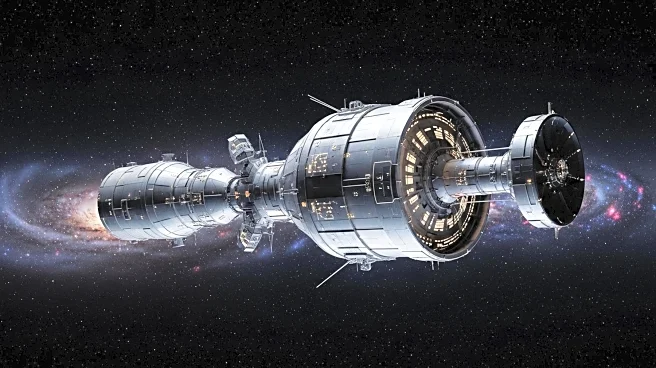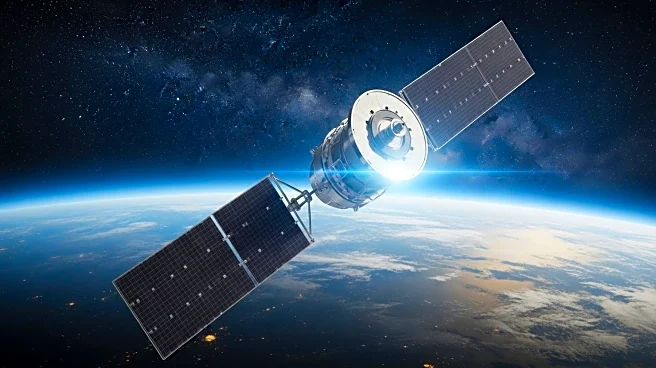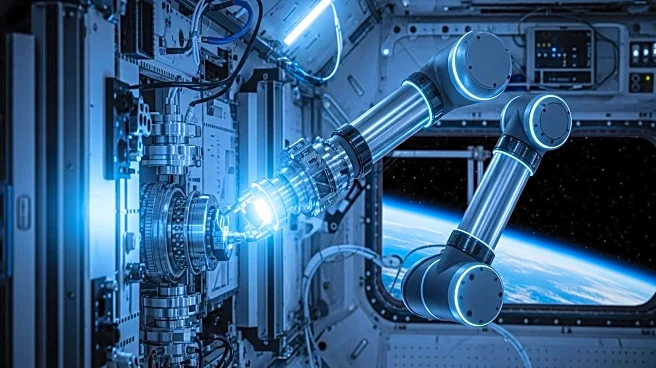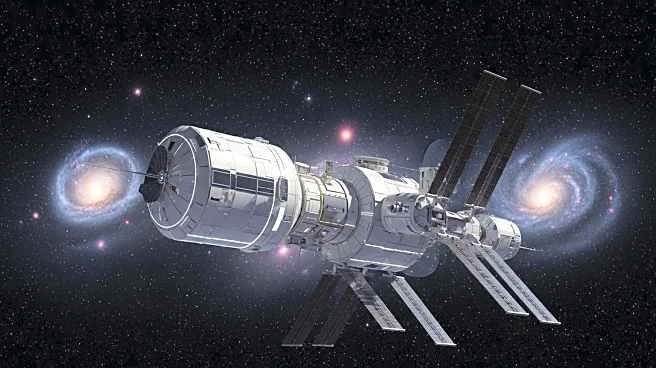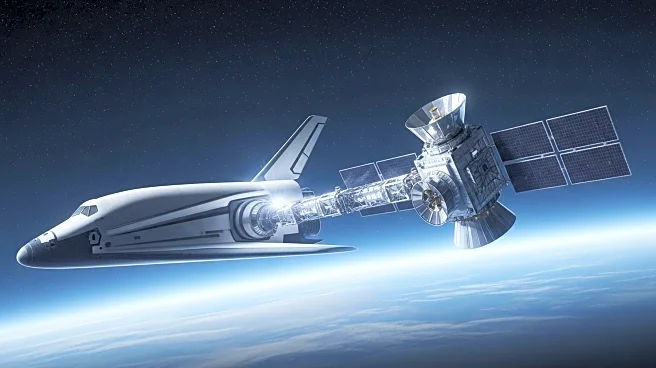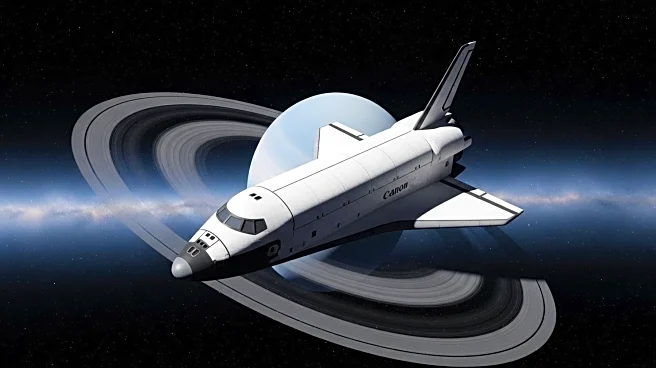What is the story about?
What's Happening?
Starlab Space unveiled a full-scale mockup of its commercial space station at the International Astronautical Congress in Sydney, Australia. The mockup showcases the station's capacity, which matches that of the International Space Station (ISS). Matt Magaña, president of space, defense, and national security for Voyager Technologies, highlighted the station's features, including large windows, payload racks, and an external robotic arm supplied by MDA Space. Voyager is leading the development of the 7.8-meter-diameter Starlab in collaboration with international partners such as Airbus, Mitsubishi Corp., MDA, Palantir Technologies, and Space Applications Services. The station's main habitation volume includes three levels, with life support systems, research facilities, and crew quarters. Starlab has already secured several customers for its microgravity platform, offering access to various scientific equipment.
Why It's Important?
The unveiling of the Starlab mockup signifies a major step in the commercialization of space, providing new opportunities for research and technology demonstrations in microgravity environments. This development is crucial for maintaining continuous access to orbit following the ISS era, ensuring that NASA and international partners can continue their space missions. The collaboration with global partners broadens Starlab's access to international markets and research communities, potentially driving innovation and economic growth in the space industry. The involvement of companies like Saber Astronautics in business development and technical execution further strengthens Starlab's position in the commercial space sector.
What's Next?
Starlab's next steps involve manufacturing the space station's primary structure, with Vivace Corp. selected to lead this effort. Development and testing will occur at NASA's Michoud Assembly Facility in Louisiana. As Starlab progresses, it will continue to engage new customers and expand its offerings, potentially influencing the future of space exploration and commercial space activities. The collaboration with international partners and the integration of advanced technologies will likely enhance Starlab's capabilities and market reach.
Beyond the Headlines
The development of Starlab represents a shift towards increased privatization and commercialization in space exploration. This trend raises questions about the ethical and legal implications of private entities operating in space, including issues related to space debris, resource allocation, and international cooperation. As commercial space stations become more prevalent, there may be long-term impacts on global space policy and the role of government agencies in regulating and supporting space activities.
AI Generated Content
Do you find this article useful?
